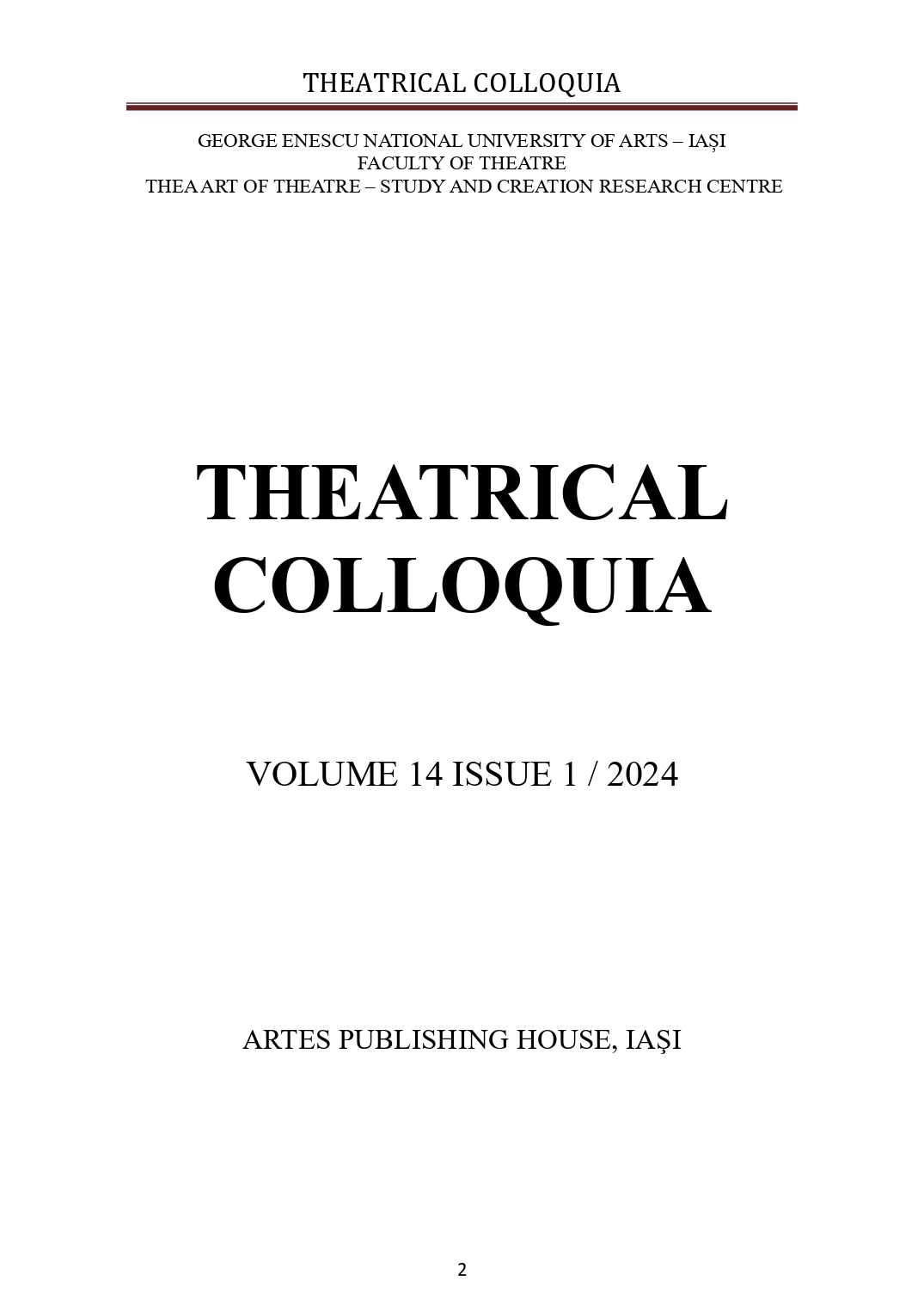Choreography in operetta performances – Case study: The ball of Prince Orlofsky from Die Fledermaus production by Johann Strauss – The Son, act II
Choreography in operetta performances – Case study: The ball of Prince Orlofsky from Die Fledermaus production by Johann Strauss – The Son, act II
Author(s): Anca IorgaSubject(s): Theatre, Dance, Performing Arts, Fine Arts / Performing Arts, Music
Published by: Editura ARTES
Keywords: operetta; choreography; scenic movement; director's perspective
Summary/Abstract: Operetta is a musical and dramatic performance similar to, yet shorter than opera, composed to a dramatic libretto with humorous elements. It is a complex production engaging the viewer in an appealing visual and audible experience marked by a harmonious blend of movement, colour and form. From a choreographic perpective, operetta brings a particular approach in that nearly the entire performance consists of planned dance sequences or ample parts of scenic movement. The research topic is the ball organised by Prince Orlofsky of Die Fledermaus (The Bat) operetta by Johann Strauss – The Son, a part of Act II, staged by Matteo Mazzoni, choreographed by Roxana Colceag and acted out by Victor Bucur. The wide range of sequences of dance steps in an operetta performance is due to the themes of such performances which allow and even impose the existence of choreographic moments, on the one hand, and to the rhythmic, danceable music often inspired from various dances specific to the geographical area where the action takes place, on the other. The performers must accurately execute the dance technical elements. The method used in creating the choreographic moment under research is immitation–based learning. Immitation is the best-known and frequently used dance composition means and consists in the reproduction by the performer, as faithfully as possible, of a dance phrase given by the choreographer. The scenic movement and the planned sequences of dance steps are the valuable fruit of the choreographer's searches and of the performers' endeavours towards achieving a flawless creative behaviour on stage, always starting from the director's perspective. In embodying their character, the performer does not truly rely on the external models they refer to, but on a great amount of spontaneity and creativity.
Journal: Colocvii teatrale
- Issue Year: 14/2024
- Issue No: 1
- Page Range: 174-183
- Page Count: 10
- Language: English

